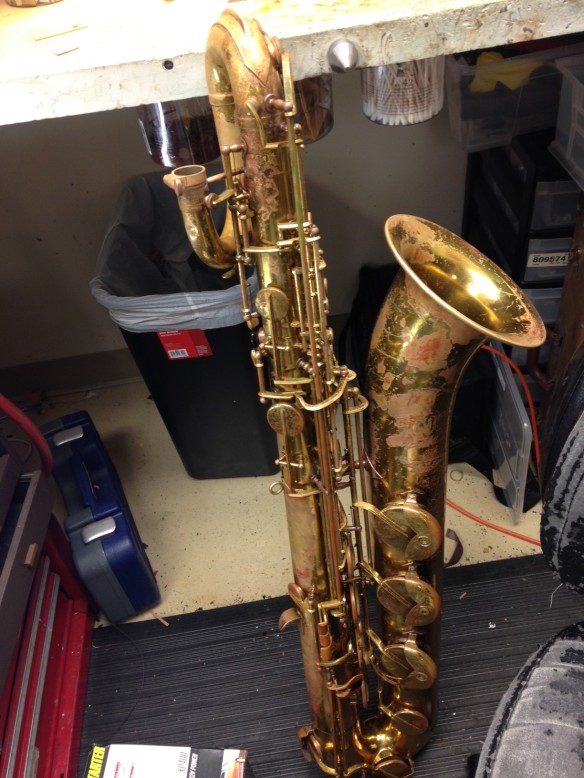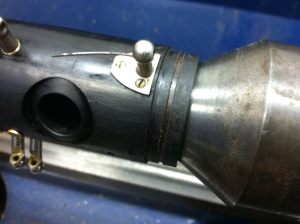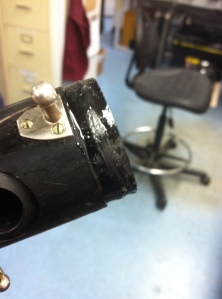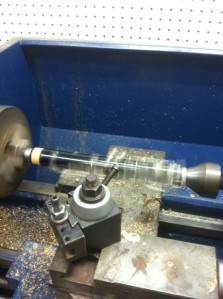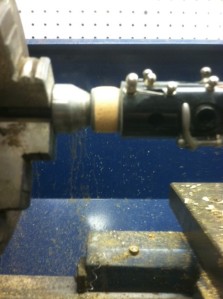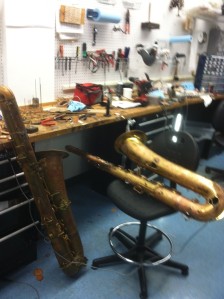
It’s summer and I finished my differential equations class at Temple so I’m back working at Coles Music Service until school starts again.
Today I repaired a cracked tone hole on a Mark VI baritone saxophone. There are a couple of ways I could have done this job:
- Simply thrown some nail-polish over the crack to seal it
- filled the crack with solder
- put a patch over the crack
I choose to patch the crack but I challenged myself to make the repair as good looking as possible within reason.
The first thing I did was grab a smashed bell that was lying around from a Custom Z tenor. I figured that the brass would be of appropriate quality and thickness if I cut a piece from one of the bell tone holes. After cutting a rough shape I used a grinding machine with an abrasive sponge type wheel (I don’t know what it’s called, I wasn’t around when the shop ordered it) to further shape the patch. Going back and forth from the tone hole needing repair to the grinder I continued to shape the patch until it sat against the tone hole and the body of the sax flush.
Next I soldered the patch to the outside of the tone-hole (never do it inside unless you are actually trying to change the diameter of the tone-hole). When it was sufficiently attached to the horn I then used a Dremel tool with a rubber abrasive wheel to remove excess solder and blend the patch as closely as possible to the tone-hole wall.
Once I buffed the tone-hole and patch to a similar surface I filled down the excess of the patch which protruded above the tone-hole and finished off using a rotary file to level the tone-hole and the new patch.
Here is the result:
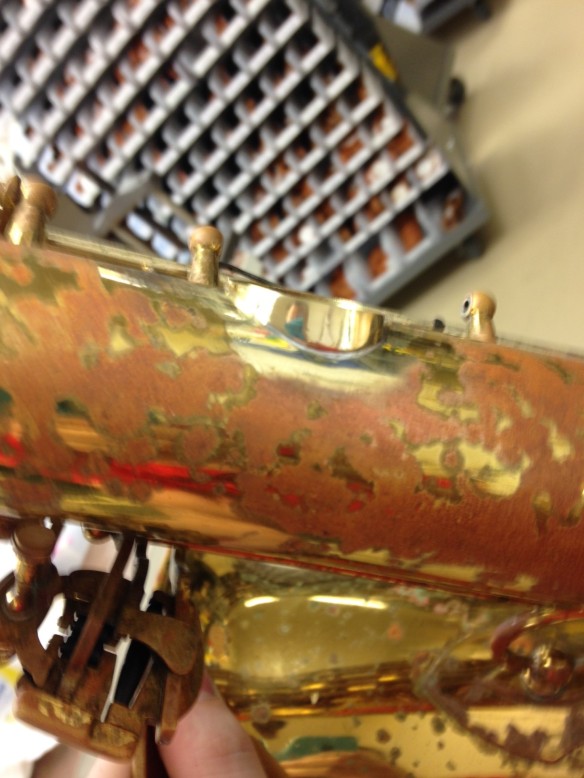
I am happy with the way this turned out. The process would have been more difficult on a horn where lacquer loss was a big concern but I think that even in that case it is preferable to do the repair this way and take the loss of original lacquer. In most cases it wouldn’t matter anyway because when a crack like this develops, the chances of much original lacquer being left anyway is unlikely considering age and abuse taken by the horn.
Ed Coles Jr. taught me this technique and I believe it is the most sound for this kind of repair on this quality level of horn where it is well worth the effort.

